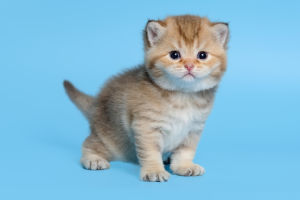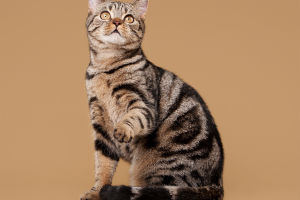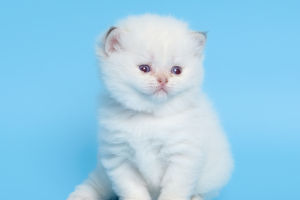If you’ve ever tried giving your cat a bath, you know just how much they seem to despise water.
While some individual cats may tolerate or even enjoy water, the majority display a strong aversion to it.
This dislike is more than just a quirky preference—it’s rooted in their evolutionary history, physical characteristics, and even sensory experiences. Understanding why most cats are reluctant to get wet can help us work with, rather than against, their instincts. Let’s explore the main reasons cats hate water and why it’s perfectly natural for them.
1. Evolutionary Background
Unlike other species, most domestic cats evolved in arid environments, where water was scarce and bathing wasn’t necessary. Wild cats, such as those in the Middle East and Africa, roamed dry, desert-like landscapes, where rivers, lakes, or other large bodies of water were rare. As a result, there was little evolutionary pressure for these animals to adapt to swimming or getting wet.
Cats that did not require regular access to water for survival and grooming passed down their water-wary traits to future generations. This evolutionary background explains why most domestic cats, which descended from desert-dwelling ancestors, naturally avoid water.
2. Unfamiliar Sensation
For many cats, water presents an uncomfortable and unfamiliar sensation. Cats are sensitive to changes in their environment and prefer consistency in texture, temperature, and smell. Water feels very different from the surfaces they’re used to walking on, making it seem unpredictable or even threatening.
Water’s unusual texture can feel “alien” on a cat’s paws and fur, triggering a natural wariness of things they don’t fully understand or control. This sensory discomfort is part of why cats often react by jumping away or shaking their paws after coming into contact with water.
3. Water-Repellent Fur (or Lack Thereof)
A cat’s fur is not naturally suited for getting wet. While some animals, like dogs or otters, have water-resistant fur that dries quickly, most cats’ fur will become heavy and cold when saturated. Waterlogged fur doesn’t just weigh them down; it also takes a long time to dry, which is both uncomfortable and potentially risky for cats, who are highly sensitive to temperature changes.
Cats also rely on their fur to keep them warm, and getting wet disrupts this natural insulation. Once soaked, their fur can’t trap air effectively to help regulate body temperature. In cool or even mild environments, wet fur can quickly lead to a drop in body temperature, making cats even more hesitant to get wet.
4. The Importance of Control
Cats are creatures of control, and water disrupts their usual sense of autonomy. When wet, their movements are hindered by heavy, soaked fur, which affects their ability to move gracefully. This is frustrating for cats, who are typically agile and deliberate in their movements.
Additionally, water can cause unpredictable sensations, like splashes and ripples, that cats find unsettling. Cats prefer to approach new experiences at their own pace, and water’s unpredictable nature limits their ability to feel in control, making them reluctant to engage with it.
5. Grooming Preferences
Cats are meticulous self-groomers. They spend a significant portion of their day grooming themselves to stay clean and to regulate their scent. Unlike some animals that rely on external sources to clean their fur, cats see their grooming routine as both a hygienic and calming ritual. Water can interfere with their natural scent and grooming pattern, which they find unsettling.
By licking themselves, cats keep their fur sleek, regulate their body temperature, and reduce stress. Water disrupts this process by wetting and matting their fur, which makes it harder for them to groom effectively. For cats, getting wet actually complicates their grooming rather than helping it.
6. Sensory Overload
A cat’s sensory system is highly developed, and water’s temperature, sound, and feel can be overwhelming. The sound of water splashing or running can be jarring for a cat’s sensitive ears, which are finely attuned to high-pitched sounds. The cool or cold sensation of water can also shock a cat’s highly sensitive skin.
Additionally, the scent of chemicals in tap water or soaps used during a bath can be off-putting to cats, who rely on their sense of smell for familiarity and security. When all these sensory elements come together, water becomes a source of sensory overload, leading to discomfort and avoidance.
7. Negative Past Experiences
Some cats may have had traumatic experiences with water early in life, which reinforces their aversion to it. If a cat was forced into water as a kitten, accidentally fell in, or endured a stressful bath, they may associate water with fear and discomfort. Negative past experiences can condition cats to avoid water altogether.
Each negative encounter builds on their preexisting hesitance, creating a lasting aversion to water. Unlike animals who gradually adapt to regular swimming or bathing, cats often carry early experiences with water throughout their lives, further solidifying their dislike.
Cats’ aversion to water can be traced back to their evolutionary roots, physical characteristics, and natural preferences for self-grooming and control. Understanding why cats dislike water helps us respect their boundaries and cater to their needs more effectively. Instead of trying to “train” a cat to enjoy water, it’s better to work with their natural instincts. If your cat needs a bath, using water-free grooming wipes or sprays can be less stressful for them.
Ultimately, a cat’s dislike of water is part of what makes them unique, and as pet owners, we can appreciate these quirks. By respecting our cats’ preferences, we can strengthen our bond with them and ensure they stay happy, comfortable, and secure in their home environment.


